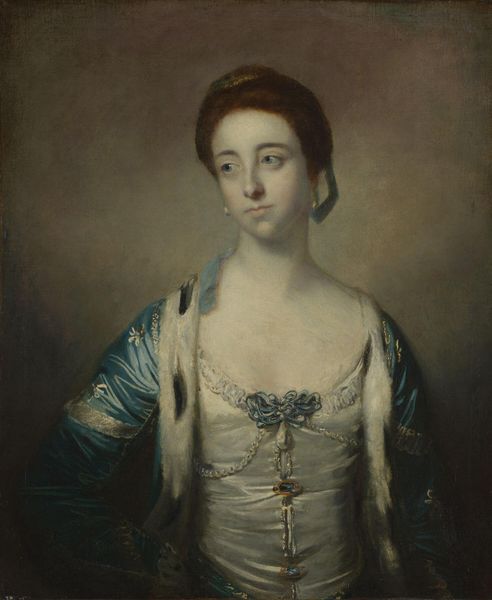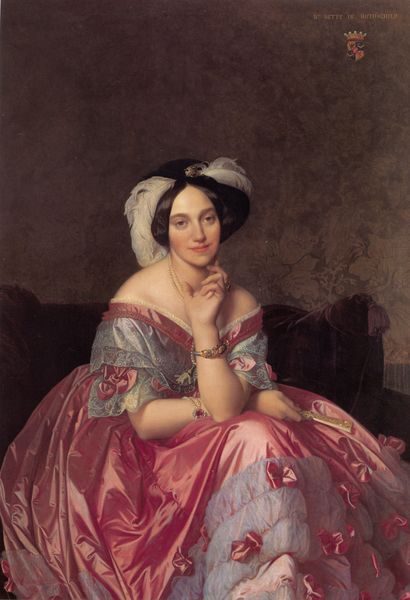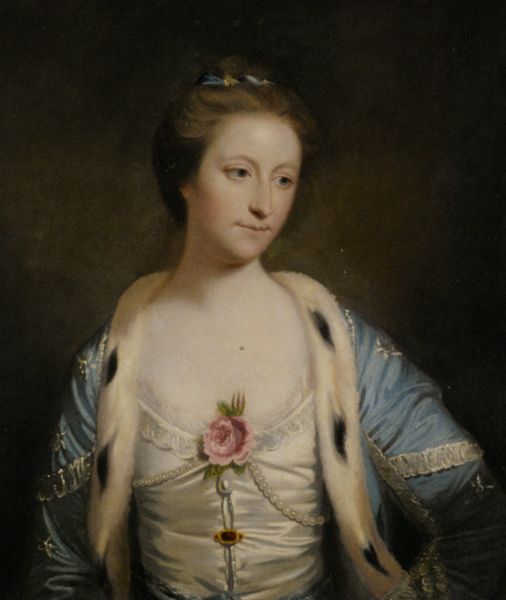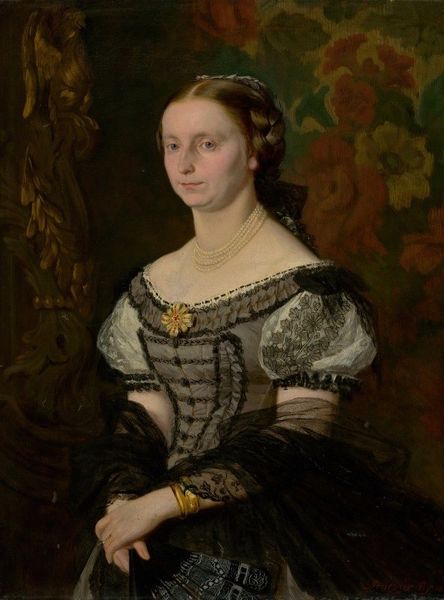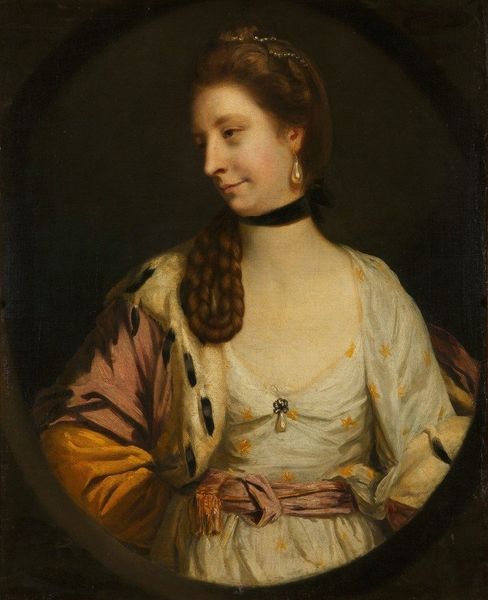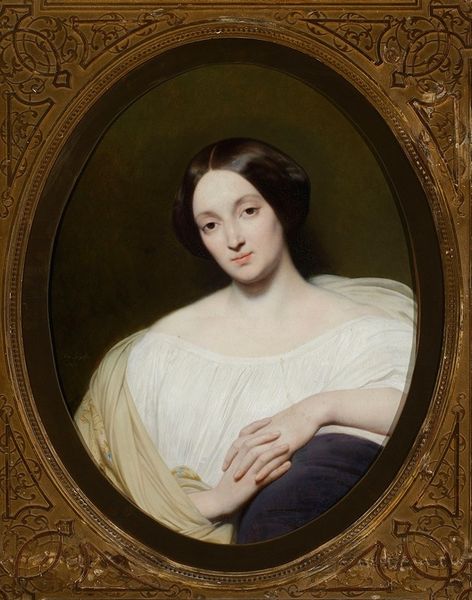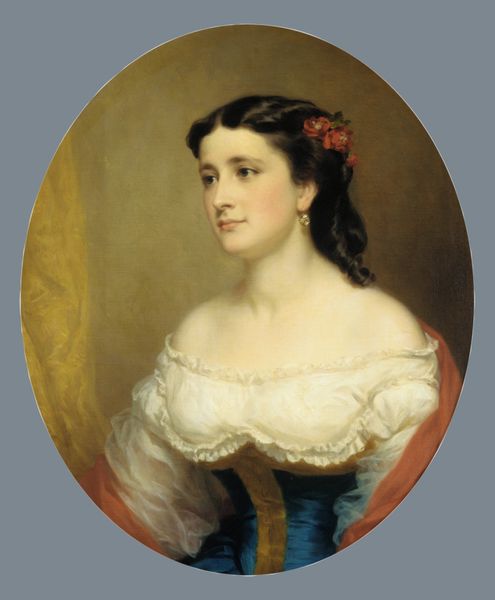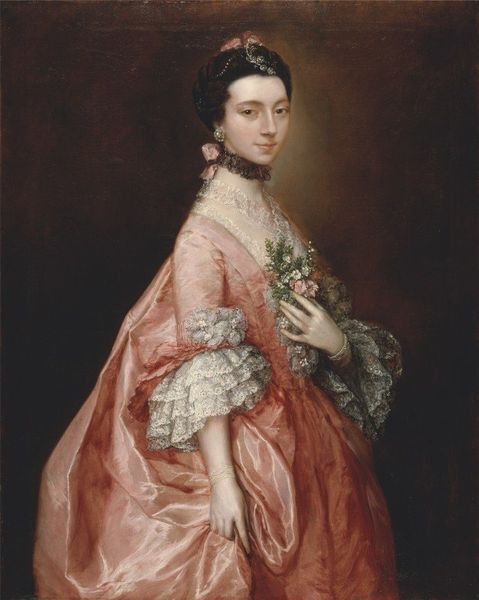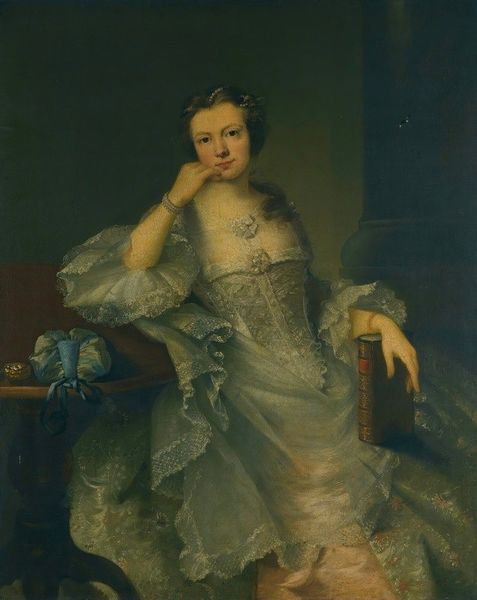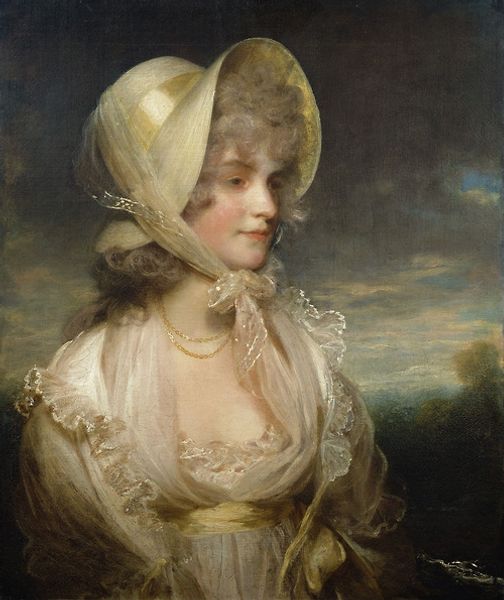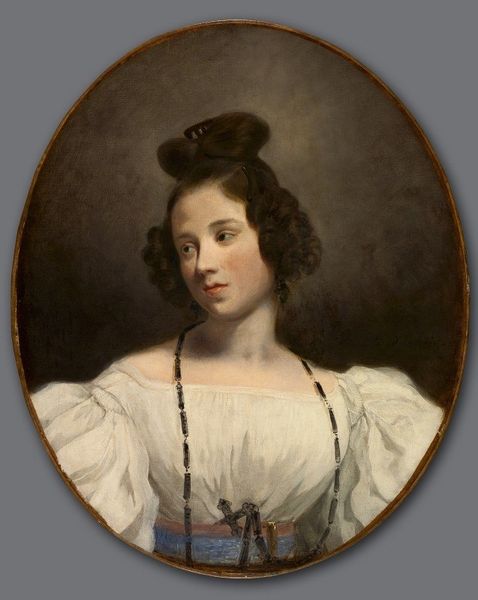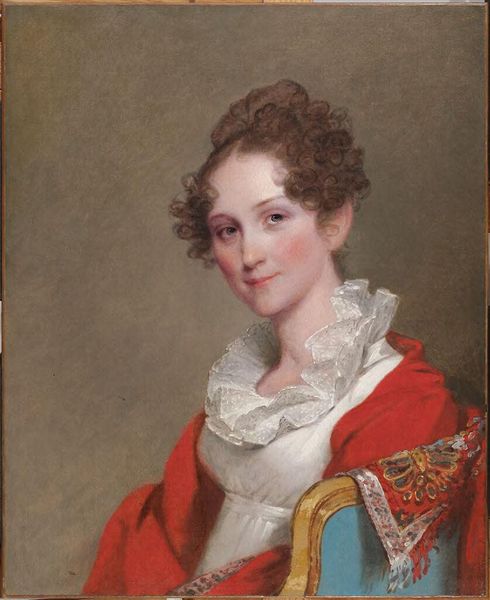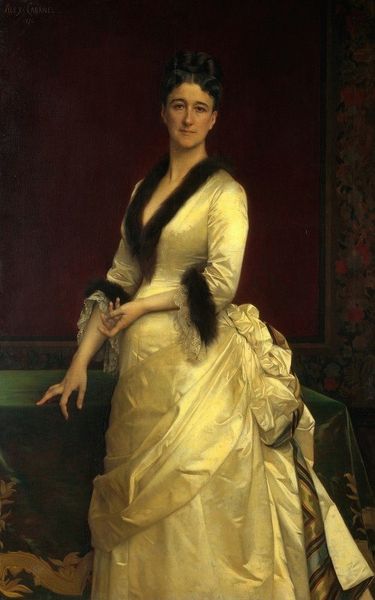
painting, oil-paint, oil-on-canvas
#
portrait
#
painting
#
oil-paint
#
academic-art
#
oil-on-canvas
#
portrait art
#
rococo
Dimensions: 30 x 24 3/4 x 3/4 in. (76.2 x 62.87 x 1.91 cm) (canvas)
Copyright: Public Domain
Editor: This is Joshua Reynolds's "Anne," painted around 1758 or 1759, using oil on canvas. The lighting makes her seem so serene, almost ethereally beautiful. How would you interpret this piece? Curator: Well, this portrait is fascinating in how it negotiates social status through artistic representation. Reynolds was a master of portraying the aristocracy, and the inclusion of ermine is a key visual indicator here. He deliberately evokes associations with wealth and power through careful detail and considered composition. What strikes you about her gaze? Editor: It feels quite demure and downcast. Is that typical for portraits of women from this era? Curator: Precisely! The downcast gaze, the elegant dress, the carefully arranged pearls, these all contributed to the construction of female identity within the societal expectations of the time. It’s less about individual personality and more about embodying a particular role, isn't it? But consider how Reynolds subtly plays with that – there's a hint of individuality in the slight asymmetry of her features. Editor: That's interesting, like Reynolds is hinting at something more behind the ideal image. Does the painting’s exhibition history reveal anything? Curator: Examining its exhibition history allows us to track how audiences interpreted Reynolds’ artistic innovations. Knowing the social circles where it was viewed illuminates the cultural values projected and received, contributing insights to its ongoing dialogues. Editor: That makes sense, analyzing reception alongside production. Thanks! I'll definitely be thinking about portraiture with a more critical eye. Curator: Indeed! It reveals much about both the sitter and the society that shaped them.
